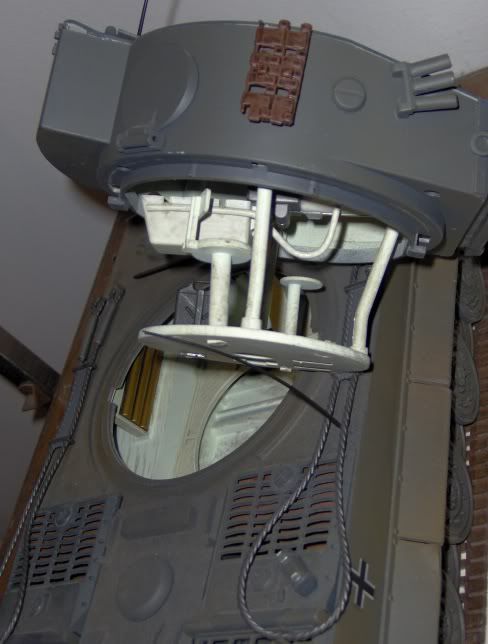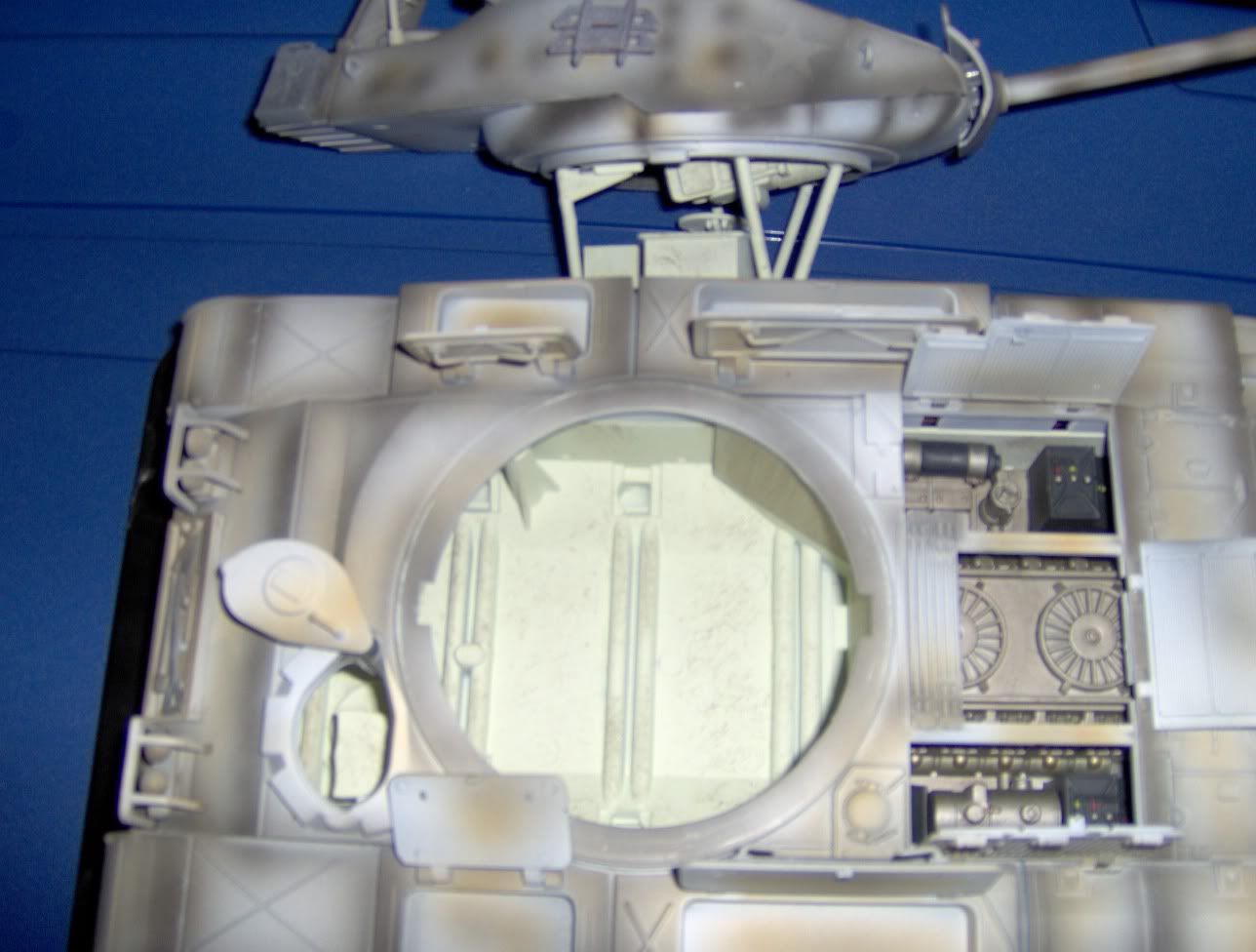Tank question
interior
Tiger. 
-
tmanthegreat
- Officer - Brigadier General

- Posts: 11239
- Joined: Tue Oct 05, 2004 7:38 pm
- Location: Central California
I hope that it's okay if I piggy-back on this post and not create a similar post but I also have a question about Tigers:
About the tow cables that are strapped all over that thing.
What were they typically used for most?
Was it at all common for these to not be on the tank, because I see them on most pictures?
Thanks,
About the tow cables that are strapped all over that thing.
What were they typically used for most?
Was it at all common for these to not be on the tank, because I see them on most pictures?
Thanks,
-mike-
http://community.webshots.com/user/macvsog101st
http://community.webshots.com/user/macvsog101st
The smaller cables attached to the side hull where used in remounting the tracks. The Tiger had two sets of tracks. One set was narrow and used for rail shipment as the regular tracks were too wide and hung over the rail car. Not sure where the narrow tracks were kept when not in use. The crew would use the sproket and the small cable as a pulley system to remount the tracks. The larger cable on top of the hull was used to tow the tank or another tank when mechanical problems occured. A vehicle without it's towing cables would be in a bad sitiuation.
-
momaw nadon
- Officer - Captain

- Posts: 777
- Joined: Mon Oct 04, 2004 3:07 pm
- Location: San Antonio, TX
- Contact:
Another popular use for the tow cables on the Tiger was to remove the turret for repairs. That was done often as I read. I just don't know exactly how it was done. I have seen pictures of them using large trees as a type hoist with another tank and seen picture of a scafle type positioned over the tank and a recovery vehicle to help. If any one knows any more I would love to know. Thanks
momaw nadon
momaw nadon
interior
Ta-152 wrote:Anyone have pics of the interiors, or a link?



Reminds me how amazing the M41 is...
-
Threetoughtrucks
- Officer - Brigadier General

- Posts: 5405
- Joined: Tue Oct 05, 2004 9:46 am
- Location: SOUTH JOISEY
- Contact:
In WW2, the most likely part of a tank to break and disable the tank was the tracks. Tracks broke on rough ground, tracks were damaged by mines and gunfire. Tanks were frequently bogged down in mud and especially ice. A tank on ice did amazing things and would easily end up in ditches.
If enemy fire permitted, tracks could be repaired with individual links being replaced in the field. Or the cable they all carried would have another tank or recovery vehicle drag the tank to a safe location.
US vehicles had a series of wreckers with twin boom cranes and various heavy winches to change turrets, engines and assist in repair.
Tank engines were removed frequently for repair and major maintenance, with a wrecker crane or an A-frame boom on and truck with a winch.
Half-track tracks were never repaired, only replaced. Two guys could change a half-track track in 30-40 miniutes.
TTT
If enemy fire permitted, tracks could be repaired with individual links being replaced in the field. Or the cable they all carried would have another tank or recovery vehicle drag the tank to a safe location.
US vehicles had a series of wreckers with twin boom cranes and various heavy winches to change turrets, engines and assist in repair.
Tank engines were removed frequently for repair and major maintenance, with a wrecker crane or an A-frame boom on and truck with a winch.
Half-track tracks were never repaired, only replaced. Two guys could change a half-track track in 30-40 miniutes.
TTT
Sometimes I am the windshield, sometimes, I am the bug.

